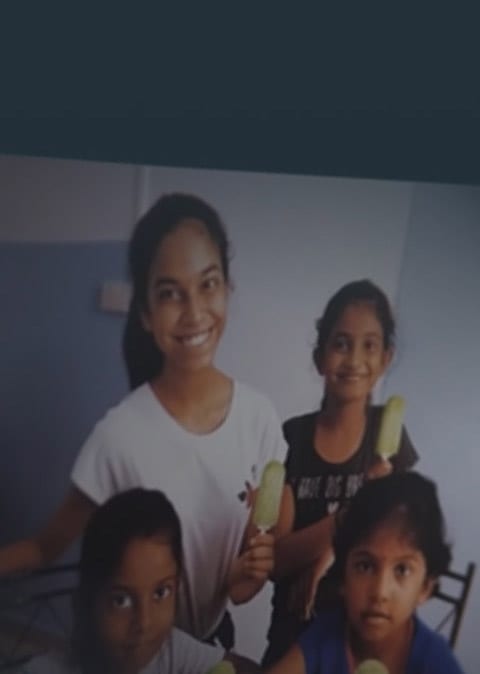“One united people, regardless of race, language or religion.”
These words from our national pledge took on a renewed significance this June. At the start of the month, a Ngee Ann Polytechnic lecturer was caught on video making offensive comments toward an inter-racial couple. A few days later, a woman was filmed disrupting her neighbour’s Hindu prayers by banging a gong.
While anecdotes of casual racism have surfaced before, what differs this time is that these highly disturbing acts were caught on camera – mere days apart – forcing us as a society to confront them.
Why do such attitudes persist in some quarters of society? Despite years of multi-racial messaging, one possible reason is that some Singaporeans “merely co-exist” with other races but do not interact with them in meaningful ways – for instance, they might not have many friends from other races, according to Dr Mathew Mathews, principal research fellow at the Institute of Policy Studies (IPS), who also heads the organisation’s Social Lab.
“In the absence of opportunities to get to know people of other races well, people fall back on stereotypes,” Dr Mathews shared in a broad-ranging interview with us on the state of racial harmony in Singapore.
Racism is a complex issue with no easy solution. But there are things we can all do. For instance, cultivating more sensitivity toward other racial groups. Creating safe spaces where we can discuss issues civilly. Practicing empathy and putting ourselves in the shoes of others before we speak and act.
On a broader level, we could also explore if there are more ways to foster meaningful social connections across racial lines. A well-designed volunteering activity, for instance, could be a means to bring different groups together toward a common purpose and plant the seeds for mutual understanding. Working with people of different racial backgrounds for a common cause can heighten beliefs in our common humanity and reinforce that people of all backgrounds want to do good to benefit others. However, volunteering activities can also be sites of racism and bias so it is important that these opportunities are well-planned so the process enhances rather than reinforces prejudices.
We spoke to Dr Mathews to gather his views on racial harmony in Singapore: Where we are doing well, what we can work on, and how to be a better supporter to friends who face discrimination.
1. What are the root causes of racism?
“In layman’s terms, people naturally seek belonging. Doing so may mean seeing yourself as part of one group and seeing others as different from yourself, and therefore competitors to available opportunities and resources.
Historically, racism has been informed by other phenomena and discourses such as colonialism, slavery and white superiority. In the Singaporean context, racist stereotypes are likely to stem from colonial times, when work was apportioned according to impressions of different races’ propensities. Finally, prejudice is learned or inherited, which explains why racism continues until today.”
2. What does research say about how Singapore society fares when it comes to race relations?
“The IPS-OnePeople.sg Indicators of Racial and Religious Harmony tracks how Singaporeans feel about the state of racial harmony on many dimensions. Based on the wave that was completed in 2019, Singapore is doing quite well and continuing to make progress on some fronts:
- Trust levels between communities increased; there were also more respondents who reported friendships with someone from another community.
- Most people including minorities said they do not experience discrimination in everyday activities (like taking public transport or shopping) and in accessing public services (like hospitals, schools or from police and the courts).
- Most respondents also said they had not experienced any negative treatment, such as being insulted or harassed, in the past two years.
However, ethnic minorities were more likely to have had negative experiences especially at the workplace. Compared to an earlier wave conducted in 2012 to 2013, more minorities reported that they had experienced discrimination in getting a job or being promoted. While there is the Tripartite Guidelines on Fair Employment Practices, to protect against discrimination in hiring and in the workplace, there might also be ‘loopholes’ such as companies listing Mandarin-speaking as a job requirement which can sometimes be a proxy for preferring to hire a Chinese person.
While racial discrimination in jobs accounts for a small number of cases investigated by the Tripartite Alliance for Fair & Progressive Employment Practices (Tafep), it may be that many minorities feel uneasy about making such reports.”
3. Despite years of multi-racial messaging in Singapore, why do you think racial prejudices still seem to exist in some quarters of society?
“Although Singaporeans have been taught that we should be multicultural and accept people of all races, there is a gap between ideology and reality. A portion of people of different races do not have many chances to interact meaningfully with one another and truly understand other cultures – some merely coexist. The IPS-OnePeople.sg survey has shown that there is a substantial group that hardly has friends from other racial groups.
In the absence of opportunities to get to know people of other races, people fall back on stereotypes, which do not get challenged or disproved precisely because they avoid people of other races. So there is a vicious cycle.”
4. As a society, how can we move from tolerance to acceptance?
“It is a gradual process and cannot be entirely top-down. People also need to take initiative and participate.
Broadly speaking, there needs to be more:
- Social interactions in ethnically inclusive settings to promote intercultural understanding. These could be in neighbourhoods, schools or workplaces. Research suggests that prejudice is reduced when people from different groups interact under certain conditions which include having equal status, common goals, intergroup cooperation, the support of authorities and opportunities for friendship.
- Open dialogue on issues that affect different ethnic communities, especially for minorities. Race and religion remain sensitive topics but constructive discussion is needed, including in schools. We need to develop the vocabulary and sensitivity to engage in such discussions. As cultures are constantly evolving, it is important to have opportunities to be able to keep clarifying to better understand. For instance, neighbours knowing how to discuss concerns about a religious practice such as the burning of incense.
- Empathy and perspective-taking. Placing oneself in another’s shoes can lead to acceptance by reducing stereotyping.”
5. What are some things that members of the majority race can do to be a better ally to our friends of other races?
“Speaking out, primarily online, is the mode in which people seem to be showing support when racist incidents take place. I would not condone practices like doxxing and turning discussions into a court to judge wrongdoers. Discussions should be kept civil in order to be constructive. With this in mind, members of the majority race can speak out in support of their friends from other races.
- There are informal conversations where friends may break out into racist commentary. Take a stand and explain to them that this is not appropriate. Even if a minority person does something that they do not like, such behaviour should not be generalised to the entire race.
- Show solidarity with friends from minority races if or when something offensive or insensitive is taking place. For example, in the aftermath of the viral video where a Chinese man (a lecturer) criticised an interracial couple, there was a follow-up revelation from a former student of the man. She posted about derogatory comments he had made about Islam in 2017 during a lecture. As a Muslim, she was upset and left the lecture theatre. A friend accompanied her and pointed out on a group chat that others could also leave if they felt uncomfortable. I think this is a pretty good strategy to show solidarity, especially if a person may not be able to intervene more proactively at the time.
- Use English and avoid breaking out into Mandarin or dialect when friends of other ethnic groups are present. This can make them feel excluded.
Overall, show an interest in being sensitive to the cultural needs of minority communities. This means gaining some intercultural understanding about how different groups celebrate life events, festivals, what is important and not important to them. Showing sensitivity can help minority members know that their majority counterparts do recognise and respect certain differences such as dietary needs and more.
By giving and being our best for others, we can build a City of Good together. Find out more: www.cityofgood.sg



















